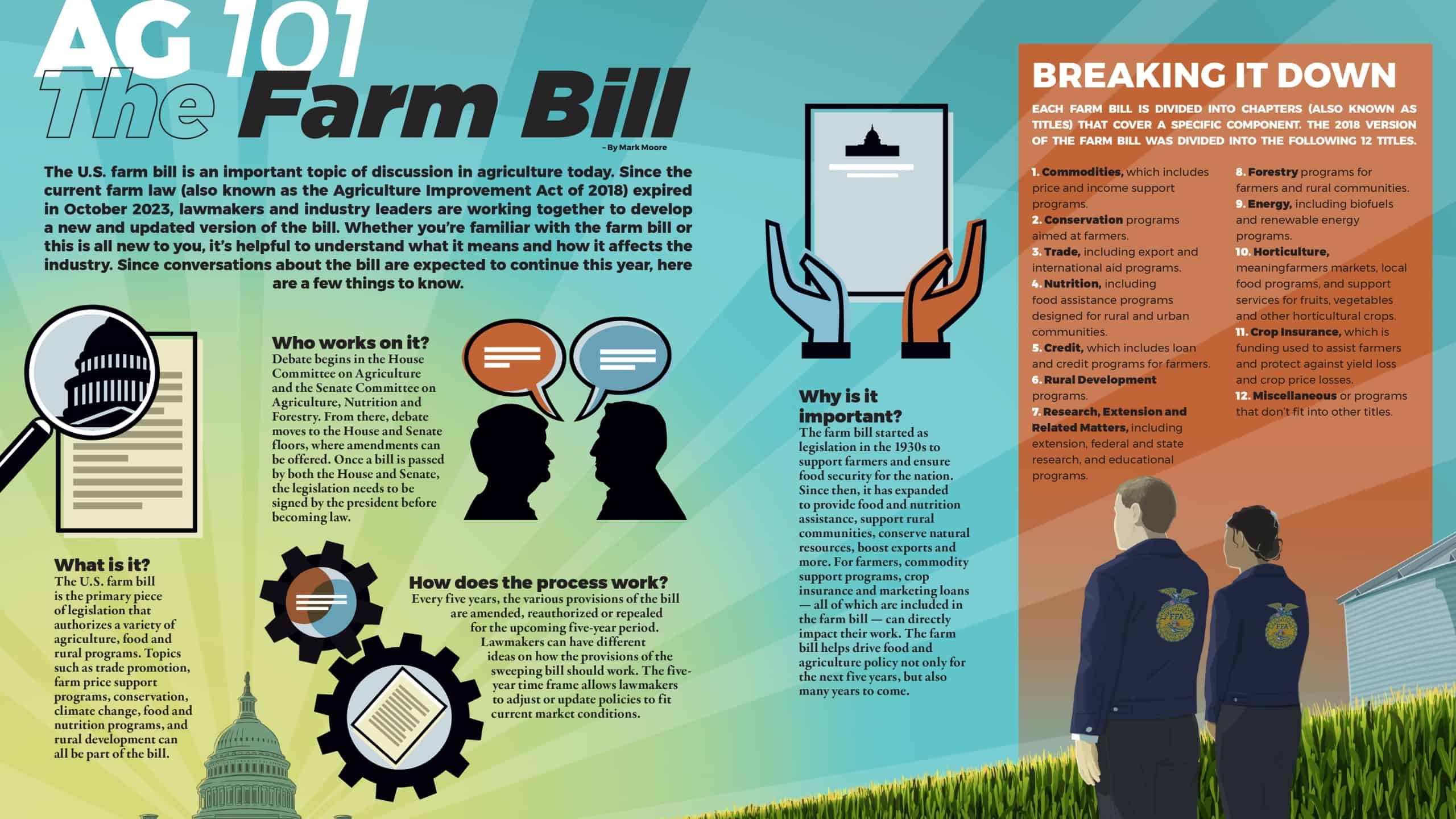The U.S. farm bill is an important topic of discussion in agriculture today. Since the current farm law (also known as the Agriculture Improvement Act of 2018) expired in October 2023, lawmakers and industry leaders are working together to develop a new and updated version of the bill. Whether you’re familiar with the farm bill or this is all new to you, it’s helpful to understand what it means and how it affects the industry. Since conversations about the bill are expected to continue this year, here are a few things to know.
What is it?
The U.S. farm bill is the primary piece of legislation that authorizes a variety of agriculture, food and rural programs. Topics such as trade promotion, farm price support programs, conservation, climate change, food and nutrition programs, and rural development can all be part of the bill.
Who works on it?
Debate begins in the House Committee on Agriculture and the Senate Committee on Agriculture, Nutrition and Forestry. From there, debate moves to the House and Senate floors, where amendments can be offered. Once a bill is passed by both the House and Senate, the legislation needs to be signed by the president before becoming law.
How does the process work?
Every five years, the various provisions of the bill are amended, reauthorized or repealed for the upcoming five-year period. Lawmakers can have different ideas on how the provisions of the sweeping bill should work. The five-year time frame allows lawmakers to adjust or update policies to fit current market conditions.
Why is it important?
The farm bill started as legislation in the 1930s to support farmers and ensure food security for the nation. Since then, it has expanded to provide food and nutrition assistance, support rural communities, conserve natural resources, boost exports and more. For farmers, commodity support programs, crop insurance and marketing loans — all of which are included in the farm bill — can directly impact their work. The farm bill helps drive food and agriculture policy not only for the next five years, but also many years to come.
Breaking it Down
Each farm bill is divided into chapters (also known as titles) that cover a specific component. The 2018 version of the farm bill was divided into the following 12 titles.
1. Commodities, which includes price and income support programs.
2. Conservation programs aimed at farmers.
3. Trade, including export and international aid programs.
4. Nutrition, including food assistance programs designed for rural and urban communities.
5. Credit, which includes loan and credit programs for farmers.
6. Rural Development programs.
7. Research, Extension and Related Matters, including extension, federal and state research, and educational programs.
8. Forestry programs for farmers and rural communities.
9. Energy, including biofuels and renewable energy programs.
10. Horticulture, meaning farmers markets, local food programs, and support services for fruits, vegetables and other horticultural crops.
11. Crop Insurance, which is funding used to assist farmers and protect against yield loss and crop price losses.
12. Miscellaneous or programs that don’t fit into other titles.












